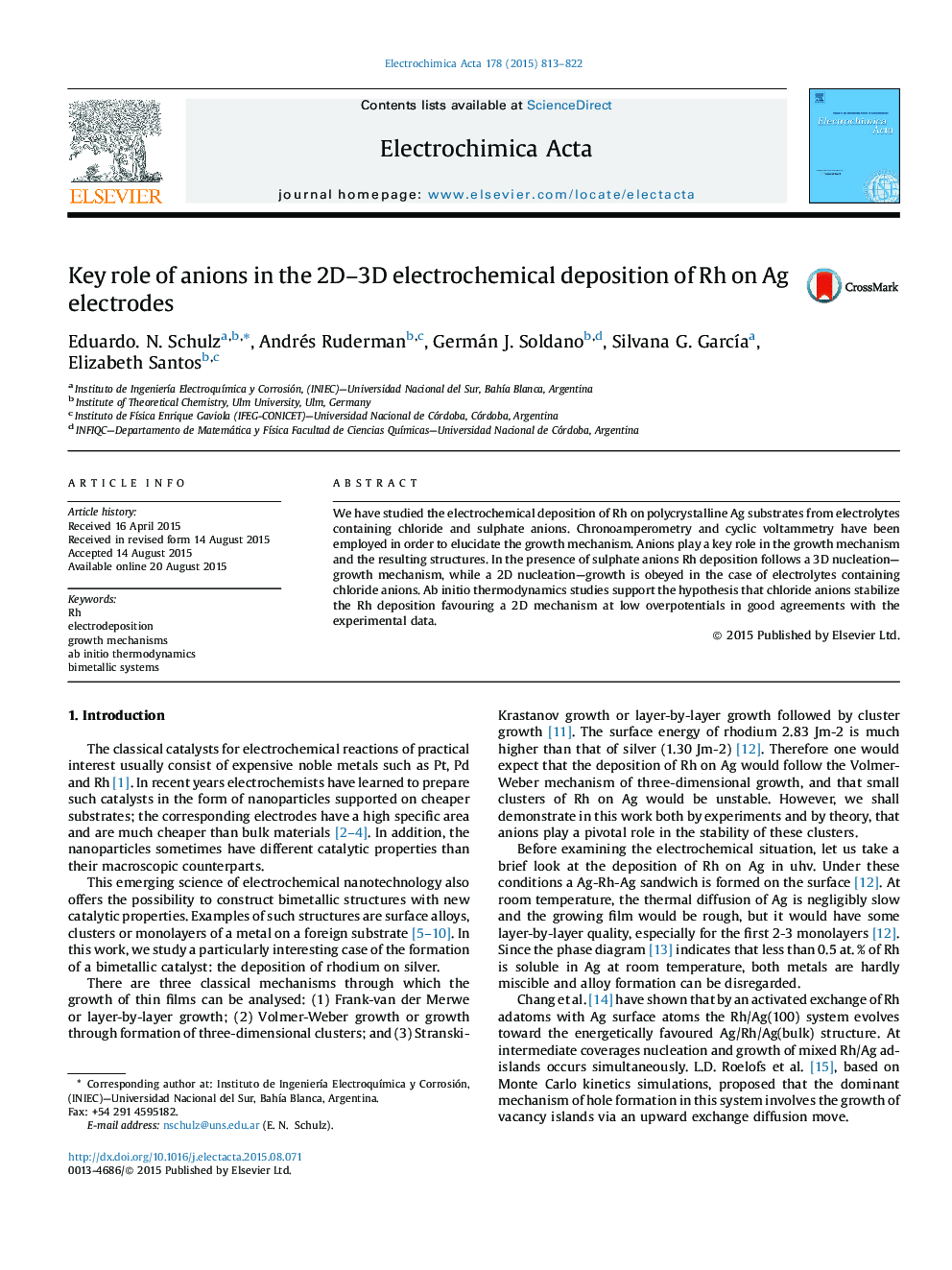| Article ID | Journal | Published Year | Pages | File Type |
|---|---|---|---|---|
| 183747 | Electrochimica Acta | 2015 | 10 Pages |
•Rh deposition over Ag substrates was studied in the presence of sulphate and chloride ions.•Rh deposition follows a 3D nucleation and growth mechanism in the presence of sulphate ions.•In the presence of chloride ions, Rh shows a 2D mechanism, followed by a 3D one.•DFT calculations were employed in order to explain the observed phenomena.•Chloride ions stabilize the Rh deposition, favouring a 2D mechanism at low overpotentials.
We have studied the electrochemical deposition of Rh on polycrystalline Ag substrates from electrolytes containing chloride and sulphate anions. Chronoamperometry and cyclic voltammetry have been employed in order to elucidate the growth mechanism. Anions play a key role in the growth mechanism and the resulting structures. In the presence of sulphate anions Rh deposition follows a 3D nucleation—growth mechanism, while a 2D nucleation—growth is obeyed in the case of electrolytes containing chloride anions. Ab initio thermodynamics studies support the hypothesis that chloride anions stabilize the Rh deposition favouring a 2D mechanism at low overpotentials in good agreements with the experimental data.
Graphical abstractFigure optionsDownload full-size imageDownload as PowerPoint slide
